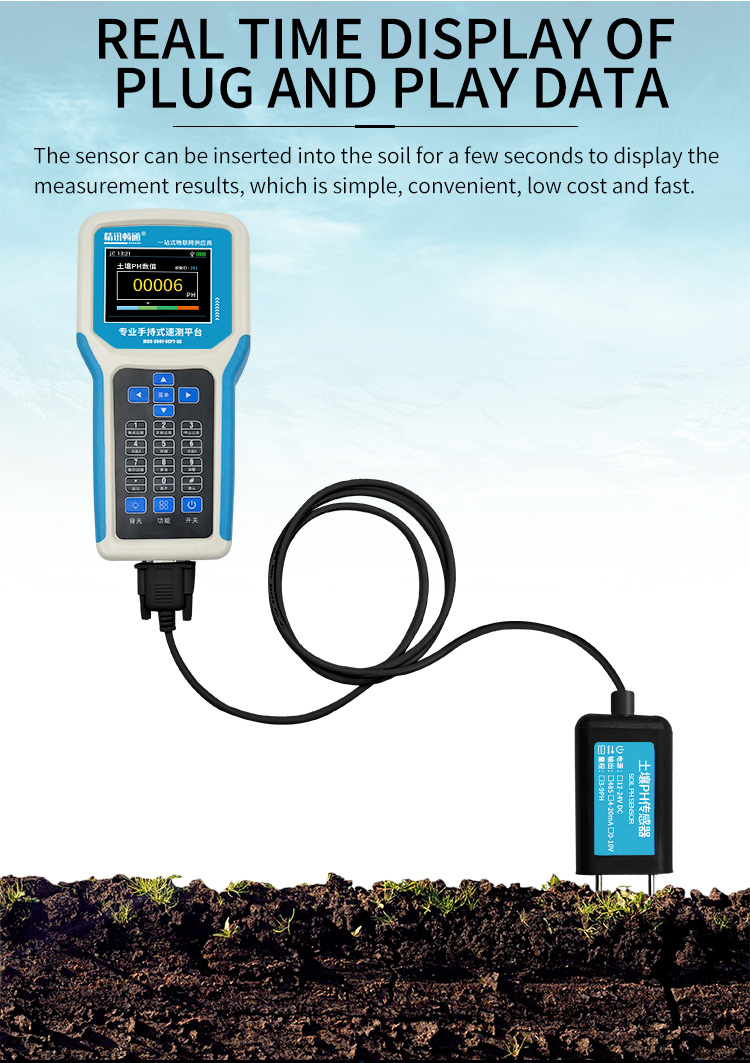Soil health is a fundamental aspect of sustainable agriculture. Healthy soil supports robust plant growth, retains water efficiently, sequesters carbon, and promotes beneficial microbial activity. Monitoring and improving soil health are essential for maximizing agricultural productivity and minimizing environmental impacts. Soil sensor technology offers a powerful tool to understand soil conditions and make informed decisions to enhance soil health. In this article, we will explore the benefits of using soil sensor technology to improve soil health and its impact on sustainable agriculture.
Assessing Soil Moisture Levels:
Soil moisture is a critical factor influencing plant growth and productivity. Soil sensors provide real-time measurements of soil moisture, enabling farmers to monitor moisture levels accurately and make informed irrigation decisions. By avoiding under-watering or over-watering, farmers can optimize water use, conserve resources, and prevent water stress or waterlogging in plants. Maintaining proper soil moisture levels promotes healthy root development, improves nutrient uptake, and increases crop yields.

Monitoring Soil Nutrient Levels:
Soil sensors also measure key soil nutrients such as nitrogen, phosphorus, potassium, and micronutrients. Continuous monitoring of nutrient levels helps farmers assess soil fertility and make informed decisions regarding fertilizer application. This allows for precise nutrient management, avoiding over-application or under-application of fertilizers. By maintaining optimal nutrient levels, farmers reduce resource waste, minimize nutrient runoff, and promote healthy plant growth.
Understanding Soil pH:
Soil pH plays a crucial role in nutrient availability and microbial activity. Soil sensors equipped with pH measurement capabilities allow farmers to assess soil acidity or alkalinity. Monitoring soil pH provides valuable insights into the suitability of soil for specific crops and helps determine if soil amendments are necessary. By maintaining appropriate pH levels, farmers create an ideal pH range for plant growth and nutrient uptake, facilitating healthy root development and optimizing crop productivity.
Monitoring Soil Temperature:
Soil temperature affects seed germination, root development, and microbial activity. Soil sensors provide real-time measurements of soil temperature, allowing farmers to assess soil conditions and make informed decisions about planting and management practices. By monitoring soil temperature trends, farmers can optimize planting schedules, reduce the risk of frost damage, and promote healthy plant growth throughout the growing season.
Assessing Soil Compaction:
Soil compaction can negatively impact root penetration, water infiltration, and nutrient availability. Soil sensors equipped with compaction measurement capabilities help farmers identify areas of compacted soil. This information allows for targeted soil aeration or tillage practices to alleviate compaction and improve soil structure. By addressing soil compaction, farmers provide favorable conditions for root growth, nutrient uptake, and overall soil health.
Enhancing Precision Agriculture Practices:
Soil sensor technology plays a critical role in precision agriculture, enabling site-specific management and resource optimization. By collecting data on soil moisture, nutrients, pH, temperature, and compaction levels at various locations within a field, farmers can tailor their management practices accordingly. This includes variable rate irrigation, targeted fertilizer application, and localized soil amendments. Precision agriculture practices driven by soil sensor technology improve productivity, reduce input costs, minimize environmental impact, and enhance sustainable farming practices.
Long-Term Soil Monitoring:
Soil sensor technology enables long-term monitoring of soil conditions, providing valuable insights into soil health trends. By capturing historical data on soil moisture, nutrients, pH, and compaction, farmers can assess changes over time and make informed decisions to improve soil health. Long-term soil monitoring helps identify patterns, evaluate the impact of management practices, and implement proactive strategies for soil conservation and enhancement.
Conclusion:
Improving soil health is vital for sustainable agriculture and environmental stewardship. Soil sensor technology offers significant benefits in enhancing soil health by enabling precise monitoring of soil moisture, nutrients, pH, temperature, and compaction levels. By leveraging real-time and historical data provided by soil sensors, farmers can make informed decisions regarding irrigation, fertilization, and management practices. This promotes water-use efficiency, nutrient optimization, and overall soil fertility. The integration of soil sensor technology with precision agriculture practices enhances resource efficiency and supports sustainable farming. With the aid of soil sensor





